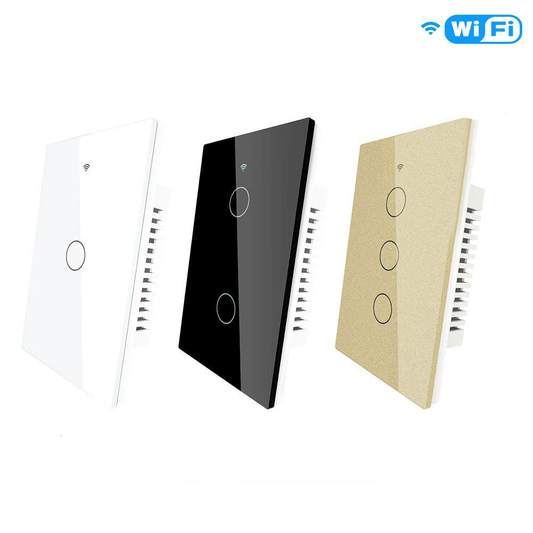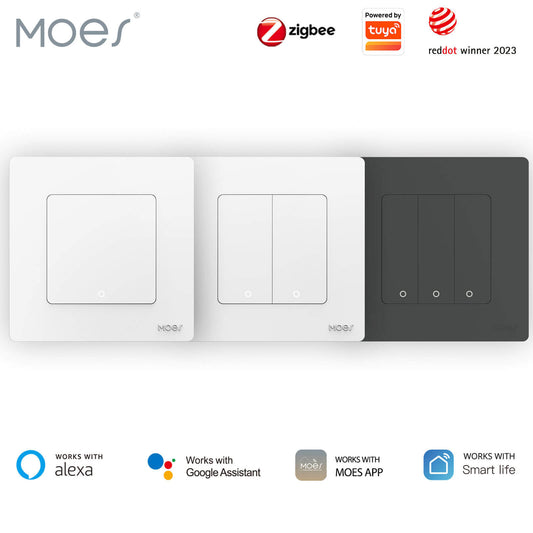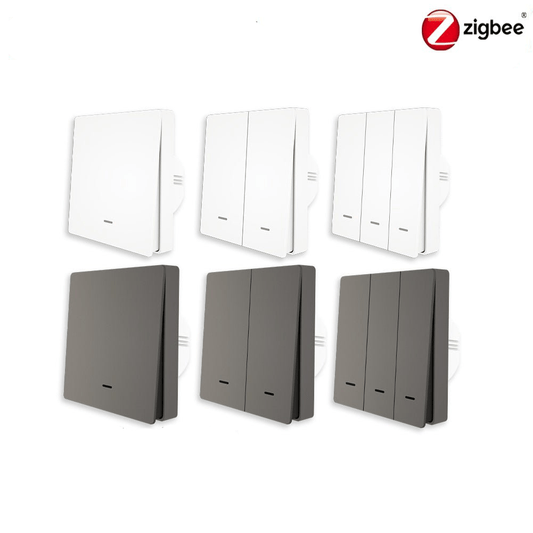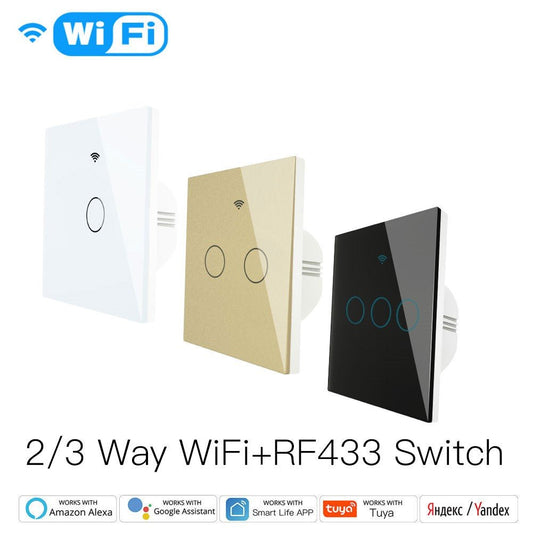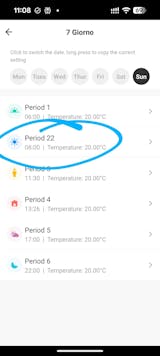The first major smart-home breakthrough came from an unlikely source: the thermostat. Released in 2011, the Nest Thermostat transformed the industry with its sleek design and cutting-edge AI technology. It provides impressive energy savings, reducing heating and cooling bills by up to 30%. Smart thermostats can offer substantial savings, particularly in homes located in extreme climates, where they can quickly pay for themselves.
However, their effectiveness is most pronounced in homes with central heating and air conditioning systems, whereas homes with radiators or radiant floors may experience fewer benefits. Despite their higher upfront cost compared to traditional models, the convenience of Wi-Fi connectivity and the ability to adapt to user habits have made smart thermostats a popular choice.

Understanding Smart Thermostat
A smart thermostat, or connected thermostat, allows for automatic and programmable temperature settings based on your daily routines, weather conditions, and heating and cooling needs. Unlike traditional models, smart thermostats learn your preferences and automatically adjust to optimize energy efficiency and comfort.
These devices connect to your Wi-Fi, enabling remote control via smartphones and compatibility with voice assistants like Google Assistant, Siri, and Alexa. They can also send reminders for HVAC maintenance, such as changing filters.
Smart thermostats outperform traditional dial thermostats, which require manual adjustments, and programmable thermostats, which have limited scheduling options. Many smart models anticipate your preferred settings and adjust accordingly, calculating how long it takes to reach desired temperatures. They can even detect when you are home or away, allowing for real-time adjustments to ensure optimal comfort and energy savings.
Smart Thermostat Costs
Smart thermostats typically range in price from $100 to $300. However, some high-end models can cost as much as $750, depending on the brand and features. Installation costs may add another $75 to $150, especially if you hire a professional.
While many smart thermostats are designed for easy DIY installation, hiring a licensed HVAC professional can ensure the job is done correctly. Professionals are familiar with your HVAC system and can determine if your home has the necessary C-wire or if an adapter is needed—considerations that might be challenging for a novice.

How Smart Thermostats Save Energy and Money
Smart thermostats have revolutionized home heating and cooling, significantly reducing energy consumption and lowering utility bills. By utilizing advanced technology and features, these devices adapt to your lifestyle and preferences, ensuring optimal comfort while maximizing energy efficiency. Here’s a closer look at how smart thermostats achieve these savings.
1. Awareness of Your Presence
One of the most groundbreaking features of smart thermostats is their ability to detect when you are home or away. Smart thermostats can automatically adjust their settings when you leave. Many smart thermostat models are equipped with presence sensors to detect occupancy or connect to your smartphone to recognize when you leave your home’s Wi-Fi network. Smart thermostats enable automatic adjustments to optimize energy consumption when you're away from home. Intelligent monitoring allows them to shut down systems in your absence, effectively eliminating unnecessary energy usage.

2. Energy-Saving Setbacks
In addition to turning off when you're away, smart thermostats perform minor temperature adjustments throughout the day—known as “setbacks.” These subtle changes in temperature help conserve energy without compromising comfort. Advanced models, like learning thermostats, learn your heating and cooling patterns and adjust their schedules accordingly, optimizing your energy use even further.
3. Enhanced Comfort
Smart thermostats ensure your home maintains a consistent and comfortable temperature. Whether you prefer a cooler environment while sleeping or a warm home upon your return from work, these devices can adjust their settings to meet your needs. With the ability to preheat or cool your home before your arrival, smart thermostats enhance your living experience while saving energy.

4. Remote Control Accessibility
With a smart thermostat, you can control your home’s climate from anywhere using a mobile app. This feature is particularly useful for making adjustments while at work or on vacation. Whether you need to cool down your home on a hot day or warm it up on your way back from a trip, you can do so with a few taps on your smartphone.
5. App-Based Scheduling
Smart thermostats allow users to create detailed heating and cooling schedules through their associated apps. This capability not only simplifies temperature management but also enables you to customize settings week by week. Whether you’re a new homeowner or have been living in your space for years, the scheduling feature provides significant flexibility and convenience.
6. Accurate Energy Monitoring
Many smart thermostats offer energy reports detailing your usage patterns, allowing you to identify areas for improvement. For example, the Nest Thermostat predicts savings of 10-12% on heating costs and 15% on cooling costs, while MOES claims that users can save around 30% on both. Such insights help you understand your consumption and make informed adjustments to your habits.
7. Movement and Learning Sensors
Some models come equipped with movement sensors that track when you and your family are at home, allowing the thermostat to adjust accordingly. Additionally, many smart thermostats have learning capabilities, meaning they can develop a customized schedule based on your usage habits. They adapt to your routine, making automatic adjustments to optimize energy consumption.
8. Compatibility with Other Smart Devices
Smart thermostats can integrate with a variety of other devices within your home, including lights, locks, and security systems. This interoperability allows for scenarios where your thermostat can react to inputs from other devices, enhancing overall energy efficiency. Furthermore, compatibility with voice assistant technologies enables you to control your thermostat using simple voice commands.
9. Safety Features for Extreme Weather
Smart thermostats often include safety temperature modes that protect your home during extreme weather conditions. By setting a desired temperature range, you can ensure your home remains safe from overheating in the summer or freezing in the winter. This feature is particularly valuable when you are away for extended periods.

10. Managing Humidity Levels
Aside from temperature control, smart thermostats help maintain optimal humidity levels within your home. They can automatically adjust to reduce excess moisture, helping to prevent mold growth and maintaining a comfortable environment.
Why Some Homes Don’t Benefit from Smart Thermostats
Smart thermostats enhance energy efficiency and comfort in homes, yet their effectiveness can vary significantly. The performance of these devices is closely tied to the type of heating system used and the household's occupancy patterns.
Compatibility with Heating Systems
Smart thermostats work well in homes with central air conditioning and furnace-based heating systems, which account for about 90% of U.S. homes. However, they struggle with radiant heating systems that use hot water circulated through radiators or heated floors. While furnaces can quickly warm a space, they operate frequently to maintain comfort, allowing smart thermostats to save energy by shutting off heating when it's not needed. In contrast, radiant systems heat more efficiently through infrared energy, but they heat and cool slowly. Adjusting temperatures can take considerable time, as warming a radiant floor may take a day or more.
Occupancy Patterns
The effectiveness of smart thermostats is also highly dependent on occupancy. If a home is frequently occupied—either by family members or pets—the thermostat's ability to optimize climate control is diminished. In such cases, maintaining a steady temperature is often more beneficial than making automated adjustments. The biggest energy-saving features of smart thermostats are realized when homes are unoccupied for extended periods, allowing HVAC systems to turn off completely.

Security Vulnerabilities
As homes become more interconnected with smart devices, the potential for security vulnerabilities increases. Smart thermostats may serve as entry points for unauthorized access to home networks. While regular software updates help address these vulnerabilities, concerns about protecting user data remain prevalent.
User Behavior and Mismanagement
Another significant factor in the effectiveness of smart thermostats is user behavior. Many homeowners fail to achieve potential savings due to improper use. A 2022 study found that users often override automated settings, leading to increased energy consumption rather than savings. Effective use of smart technology depends not only on the device's capabilities but also on the homeowner's understanding and management of those features.
Is a Smart Thermostat Worth It for MOES Customers?
MOES smart thermostats enhance home comfort, offer convenience, and improve energy efficiency. With features that allow you to control your home’s temperature from anywhere, whether you’re on vacation or running errands, these devices make it easy to maintain your ideal climate. They can be programmed to adjust temperatures according to your schedule, ensuring your home is always just right.
While there are some disadvantages, such as initial costs, these can often be offset by rebates and the long-term savings on energy bills. The benefits of convenience, efficiency, and energy savings clearly make MOES smart thermostats a worthwhile investment.
If you’re considering upgrading to a smart thermostat, now is the perfect time to explore your options. Visit our website or contact us today to learn more about our range of MOES smart thermostats and how they can transform your home into a more energy-efficient haven. Don’t miss out on the opportunity to enhance your home’s comfort while saving on energy costs!


